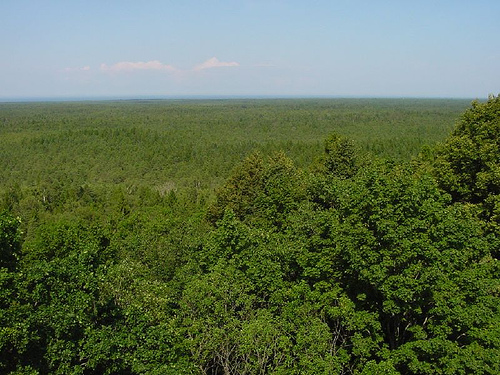

Location: Talsi District, Kurzeme Region Map
Area: 264.9 km²
Tel: +371 63200855
Slītere National Park is located in Talsi District, Kurzeme Region in Latvia. It covers 265 km² of untouched broadleaf forest and sand dunes (kangari in Latvian) on the Baltic Sea coast. It is inhabited by numerous species of birds and animals that include Elks, Lynxes, Wolves, Rabbits and many others. On the coast of the Baltic Sea you can encounter Grey or Ringed Seal. These animals occasionally venture on dry land. It is better to watch them at a distance. As soon as they notice human presence they usually flee in the sea. They are several species of turtles and lizards as well as copperheads that are fairly poisonous to humans. Historic Slītere Lighthouse situated on its territory is open from Wednesday to Sunday from 10am to 6pm. It was constructed on the Blue Hills in 1849- 50. It is second oldest lighthouse in the country, but also highest above sea level at an elevation of 82 m. It is inactive today and serves the needs of tourists. Here you can observe surrounding lands and get information the National Park. There are 14 different trails for hiking, skiing, or cycling in the forest.
History
In 1910, the Riga Society of
Naturalists petitioned the Main Directorate of Land Management of
the Russian Empire to establish a nature reserve on the Moritsa (or
Moritsala) island. The permit was obtained and, thus, the island of
Moritsa (with an area of 80 hectares) on Lake Usma in the
Windavsky district of the Courland province became the first state
reserve of the Russian Empire. It was the oldest nature reserve in
the Republic of Latvia and the USSR.
The second Latvian
nature reserve was Zalie Kalni (Green Hills), organized in 1921 in
the vicinity of the city of Dundaga on an area of 717 hectares.
Later, on the basis of "Zalie Kalni" in the Talsi region of the
Latvian SSR, the Slitere reserve with an area of 15,060 hectares
was created, to which the smaller reserves Moritssala in the
Ventspils region (which at that time had an area of 818 hectares)
and Grini were administratively subordinate in Liepaja region (area
1076 hectares).
In 2000, on the basis of the former reserve,
the Slitere National Park was established.
Currently
The
area of the Slitere National Park is 265 km2 (of which 101 km2 are
on the Baltic Sea). Slitere is the smallest national park in Latvia.
The national park is famous for its deciduous forests covering
the ancient coastline and the unique complex of dunes (so-called
kangari in Latvian) and inter-dune depressions (vigas), partly
occupied by swamps. Most of the broadleaf forests are located in the
Kalni Zalie (or Green Hills), which from a geological point of view
is one of the most famous attractions in the park. Thousands of
years ago, Kalni Bay was the ancient coastline of the Baltic glacial
lake.
About 30% of the park's area is covered with coniferous
forests. The flora of the park includes hundreds of species of
higher plants and mosses. 29 species of them are found nowhere else
in Latvia. Slitere National Park lies along the Baltic Bird
Migration Route. This makes the park one of the best birdwatching
spots in Latvia. Almost all bird species found in Latvia were also
found in Slītera. During spring and autumn migrations, it is
possible to observe up to 60 thousand migrating birds per hour. The
largest mammals in the national park are wolf, lynx and elk. Many
rare species of insects and terrestrial molluscs are found in the
national park, which is associated with a high diversity of
vegetation and habitats. On the coast of the Baltic Sea, gray seals
are possible, and sometimes a rare ringed seal is noted there.
Slitere National Park protects a large part of the Livonian
coast (Līvõd Rānda), protecting historical Livonian villages for the
sake of the future. See Kolkasrags and Vaide villages, Saunags,
Pitrags.